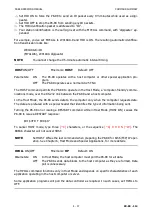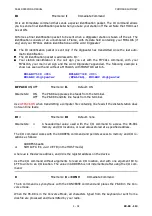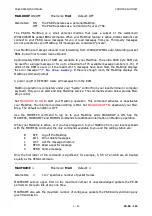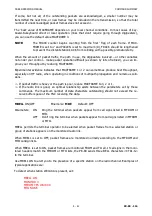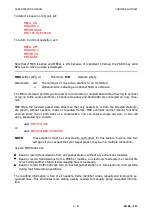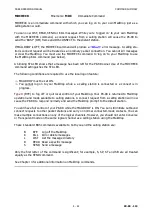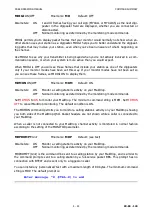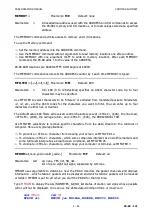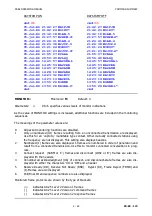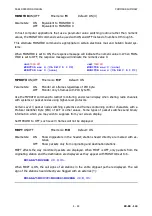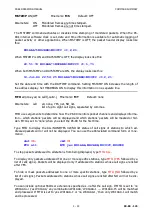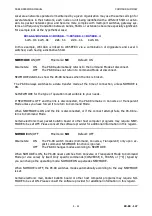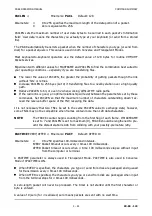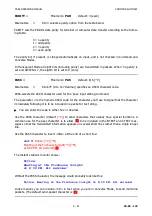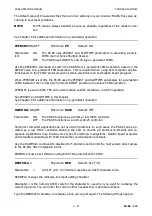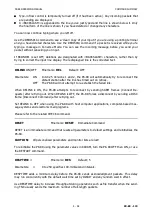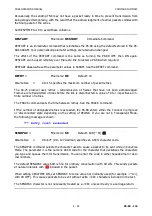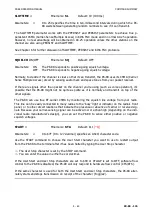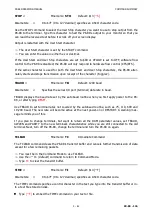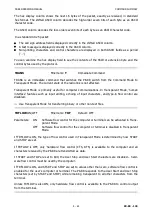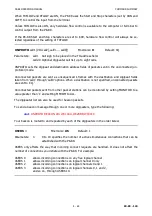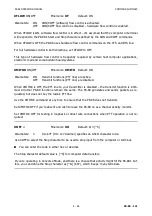
PK-88 OPERATING MANUAL
COMMAND SUMMARY
5 - 51
PK-88 - 126
When MFROM and MTO contain different types of arguments, to avoid any possible conflict, the
arguments take the following priority:
1. ALL
2. NO list
3. YES list
4. NONE
Clear MTO with
%
,
&
, or
OFF
as arguments.
MYALIAS
call[-
n
]
Mnemonic:
MYA
Default: empty
Parameters:
call
Alternate identity of the PK-88.
n
alphanumeric optional substation ID (SSID) or extension.
MYALIAS specifies an alternate call sign (in addition to the call sign specified in {MYCALL} for use
as a digipeater only.
MYALIAS permits both normal HID identification and an alias alternate, repeater-only 'call sign'.
Wide-coverage digipeater operators in some areas change their call sign to a shorter and (usually)
easier to remember identifier. Identifiers used include International Civil Aviation Organization
(ICAO) airport IDs, sometimes combined with telephone area codes.
MYCALL
call[-
n
]
Mnemonic:
MY
Default: PK88
Parameters:
call
Your call sign.
n
Alphanumerics indicating an optional substation ID (SSID) or extension.
NOTE:
The PK-88 will not key your transmitter until you install your call sign in place of
'PK88'.
Use the MYCALL command to load your call sign into the PK-88's RAM. Your call sign is inserted
automatically in the FROM address field for all packets originated by the PK-88. MYCALL is also
used for identification packets (see HID and ID).
The PK-88 accepts connect request frames with your MYCALL in the TO field and repeats frames
with this call sign in the digipeat field.
The 'PK88' default call sign is present in the PK-88's RAM when the system is manufactured. This
'artificial call' must be changed for proper operation of the packet protocols.
Two or more stations cannot use the same call sign (including SSID or extension) on the air at the
same time.
⇒
Use the SSID or extension to distinguish two stations with the same call.
⇒
The SSID or extension will be zero (0) unless explicitly set to another value.
Although there is no standardization of SSIDs at present, most Packet-Radio operators use SSID 0
(zero) for manual or local keyboard operation of their main station, and an SSID of (-1) or (-2) for
a secondary station or dedicated digipeater under their responsibility.

